2024 Chevy Blazer EV First Drive Review: Room to Improve
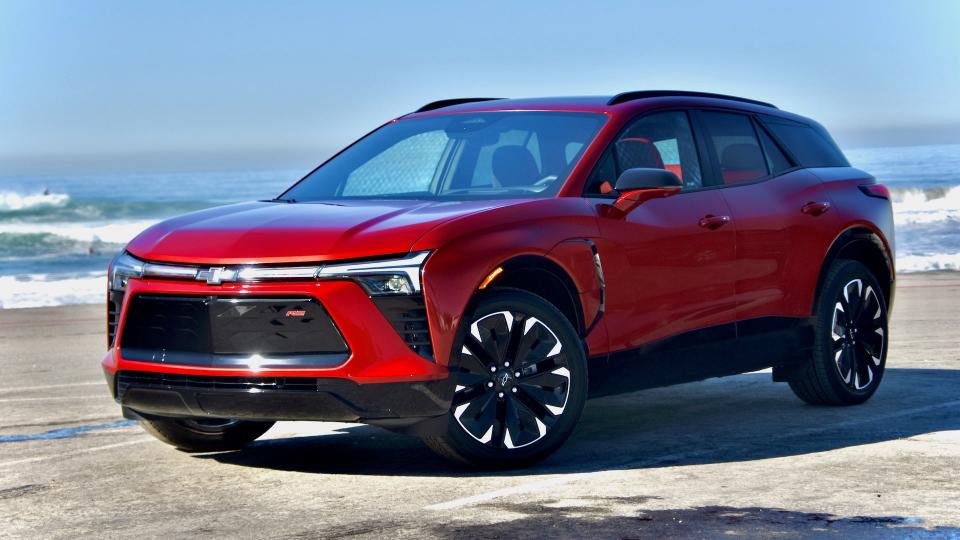
The 2024 Chevy Blazer EV is a crucial cog in the machine that is General Motors’ grand EV ambitions. It’s a two-row midsize SUV aimed at the heart of the electric car market under the everyman Chevy brand. In short, it’s the EV that GM thinks is the perfect fit for the average American, and one it expects to sell in spades.
But like the company's electrification strategy at large, the Blazer EV hasn’t gone off without a hitch. As GM’s large-scale EV production gets pushed back, raising the importance of early entrants like this, the Chevy enters what is a red hot space with undeniable strengths like strong range and stellar Super Cruise driving assist tech. But it also comes onto the scene with a surprising lack of grace: a ride that's too stiff for a family vehicle, a Apple CarPlay-free infotainment that needs further development, an unfocused design, and a pricing structure that makes it less competitive than it could be.
You'd think a natural rival would be the Ford Mustang Mach-E, or the Tesla Model Y. But those are compact SUVs—as a midsize, the Blazer EV is seven inches longer and four inches wider than the Ford. It's priced accordingly too. The 2LT trim starts at $56,715, while the RWD RS version is almost $62,000. That's three-row Kia EV9 territory, let alone the number of great gas or hybrid options, and the Blazer EV feels like it's stuck in between, not offering the most of anything for that money. Being a decent electric crossover isn't enough to move the needle anymore.
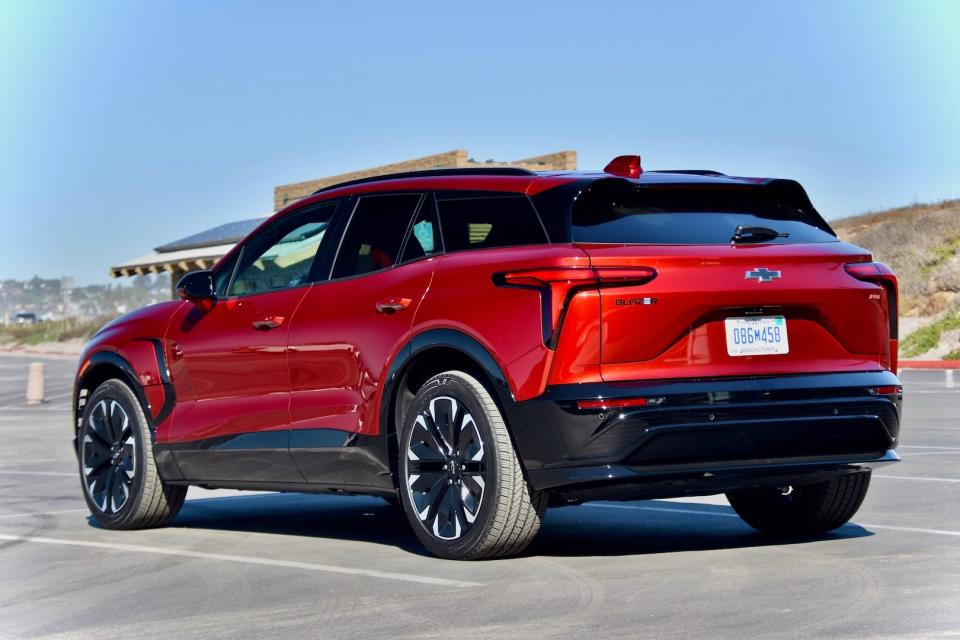
2024 Chevy Blazer EV Specs | AWD | RWD |
|---|---|---|
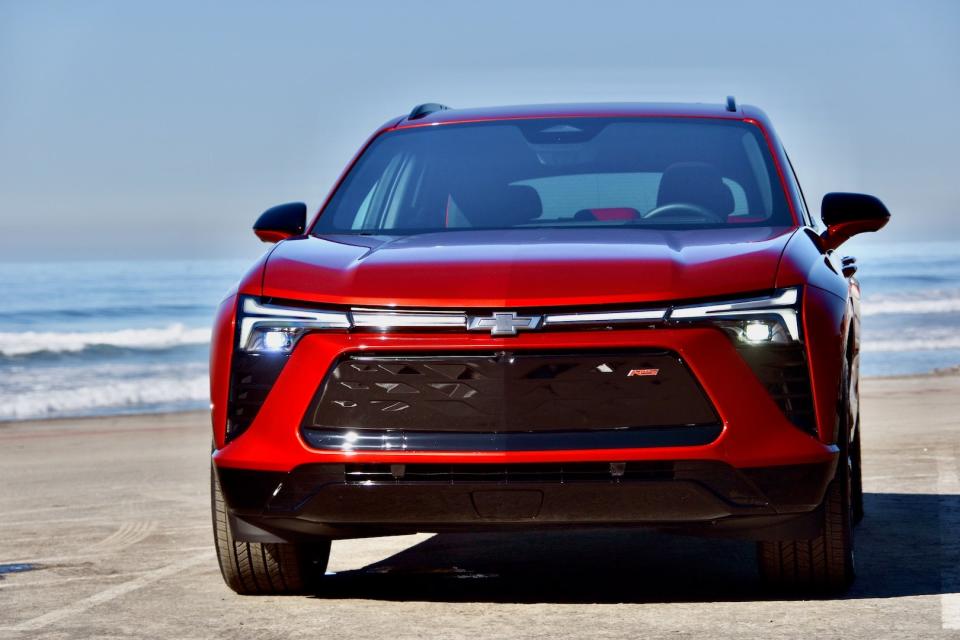

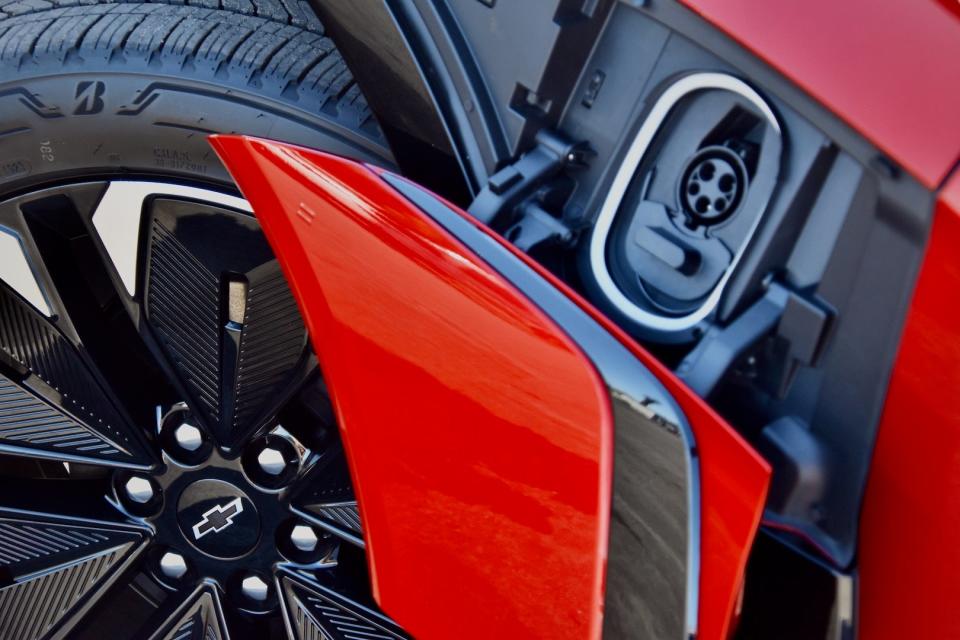
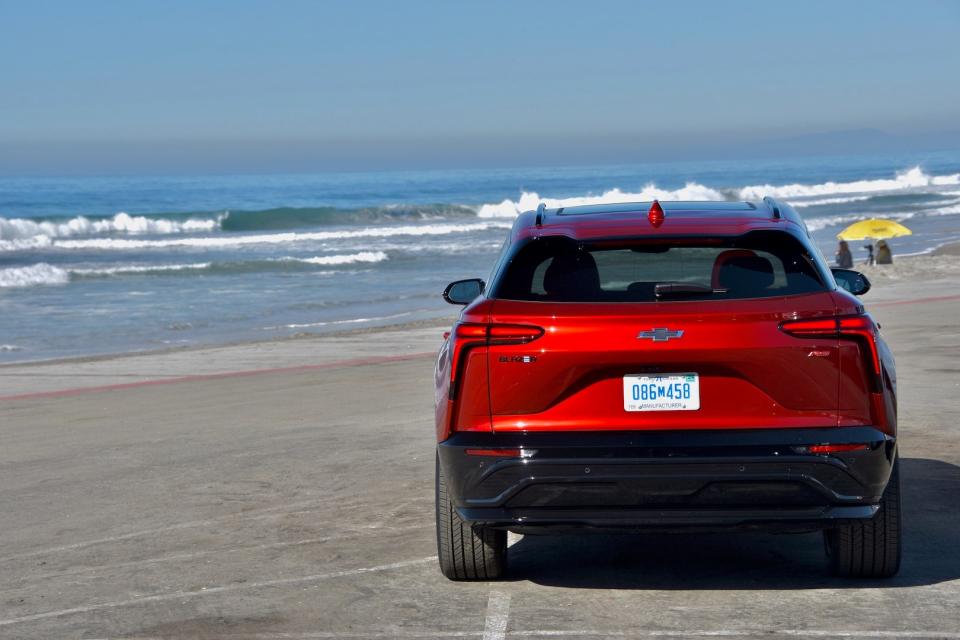
To clear up some confusion, the Blazer EV isn’t related to the Blazer SUV as you know it—only 7.5% of parts are shared between them. They’re different down to the bones, with the EV being based on the one-size-fits-all Ultium architecture used in everything from the next-generation Bolt subcompact to the hulking GMC Hummer EV.
A five-seat midsize crossover that takes up about the same amount of real estate as the gas Blazer, it gets two battery choices of 85 and 102 kWh, powering the drive wheels of your choice. Any choice: there’ll be front-, rear-, and all-wheel-drive models eventually, and even a high-performance SS model too. Charging is done through a CCS port, though it’ll switch to Tesla's NACS standard in a couple of years—GM will also provide adapters, so don’t fret. It gets bidirectional charging that can power your house in a blackout, and serious Google integration whose benefits I’ll explain later.
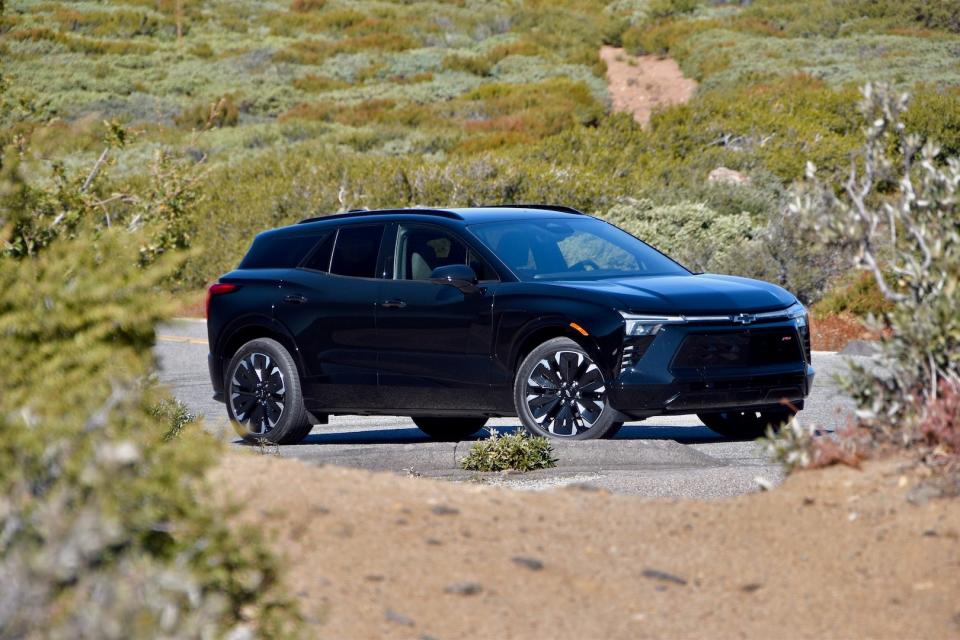
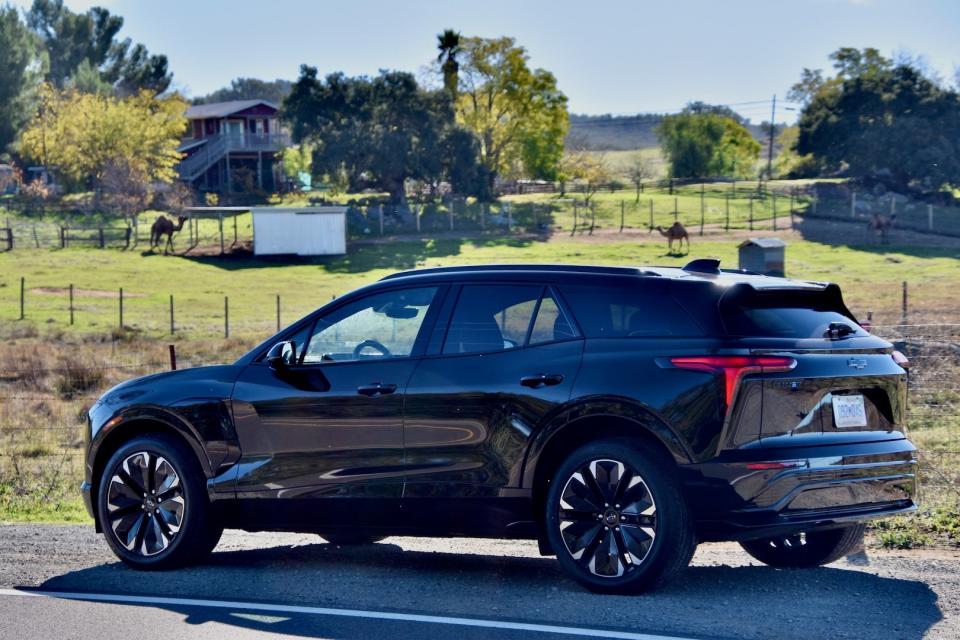
The Blazer EV is distinguished from the fossil-fueled model by a significantly different design, with more stylized headlights, a longer wheelbase that gives it more RWD proportions, and fin-like elements cupping the front fenders. There’s a subtle feather pattern on the wheels and a perk to the edges of the rear spoiler that evokes those common on the Dodge Charger. It’s not that attention-grabbing on the whole though, for better or worse depending on whether you want people to know you drive an EV.
The interior meanwhile is more polarizing, with its spaceship thruster-like vents, 11-inch digital instrument cluster, and a gigantic 17.7-inch touchscreen canted toward the driver. It’s tremendously spacious, with significant legroom and multiple fingers of headroom above my 5-foot-11 crown. The dual center console bins are more useful than some alternatives’ floating center consoles, and physical controls have been retained for the most important technical functions.
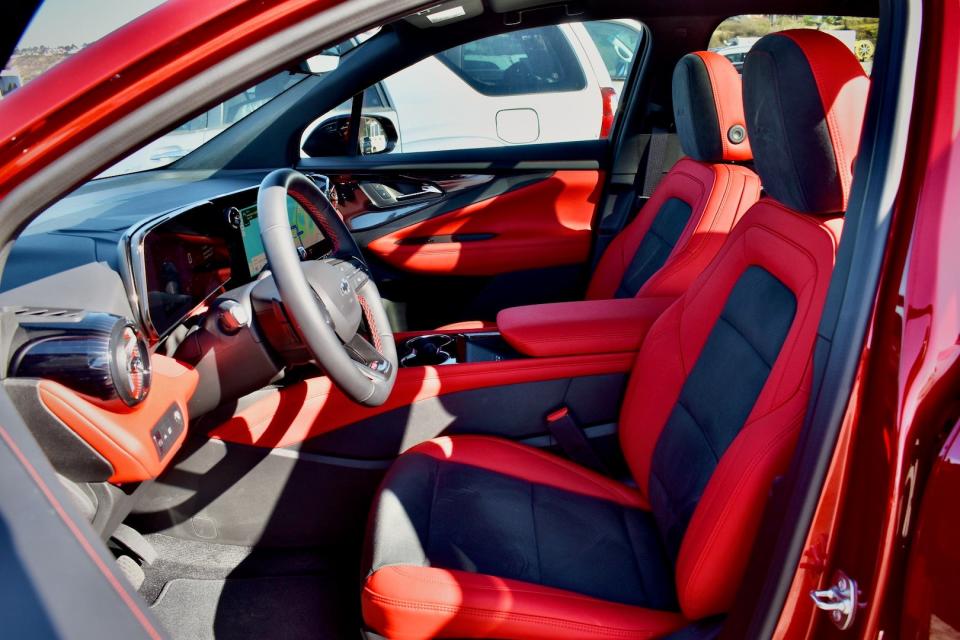
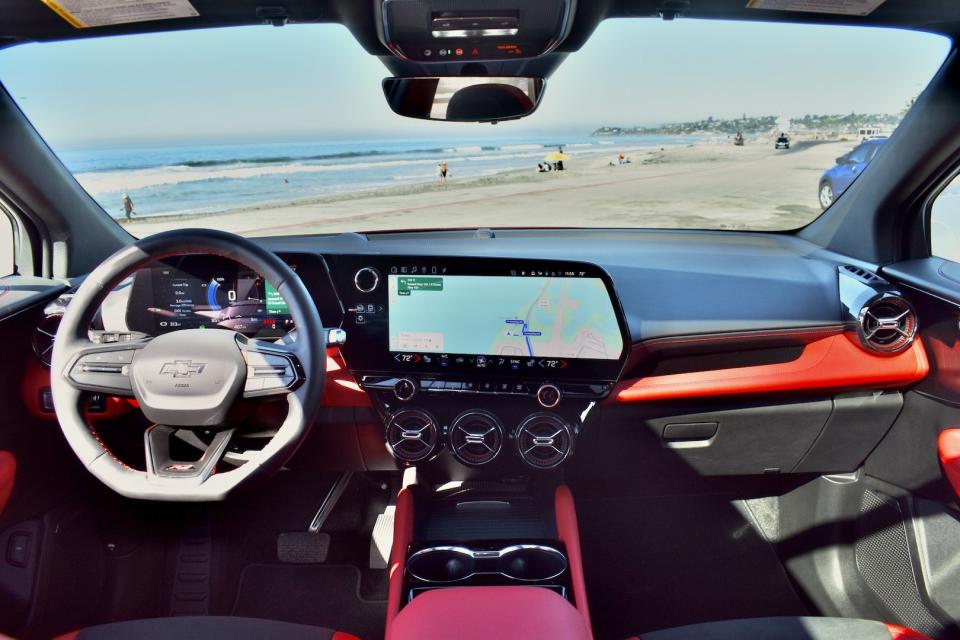
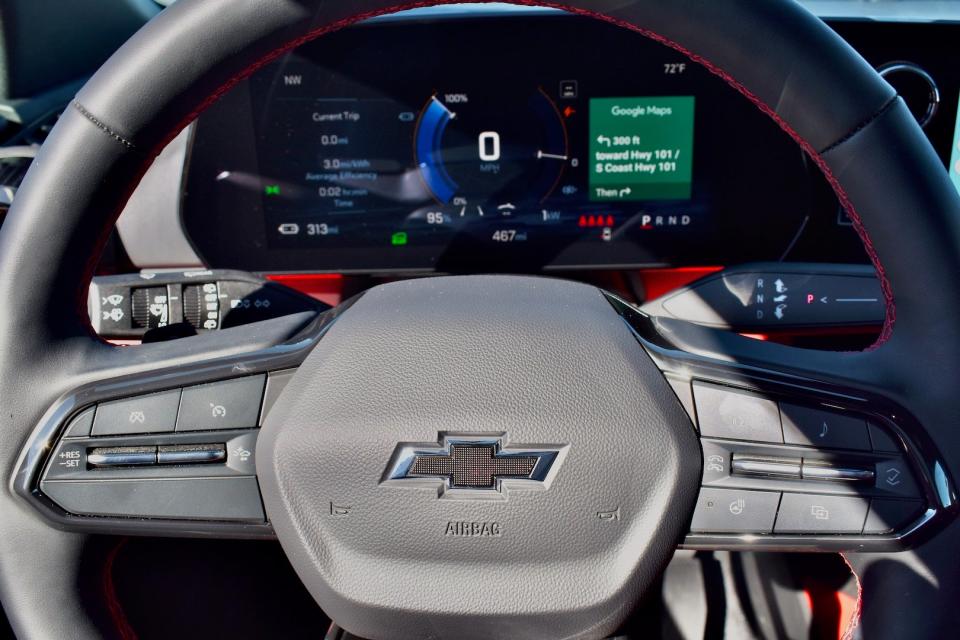
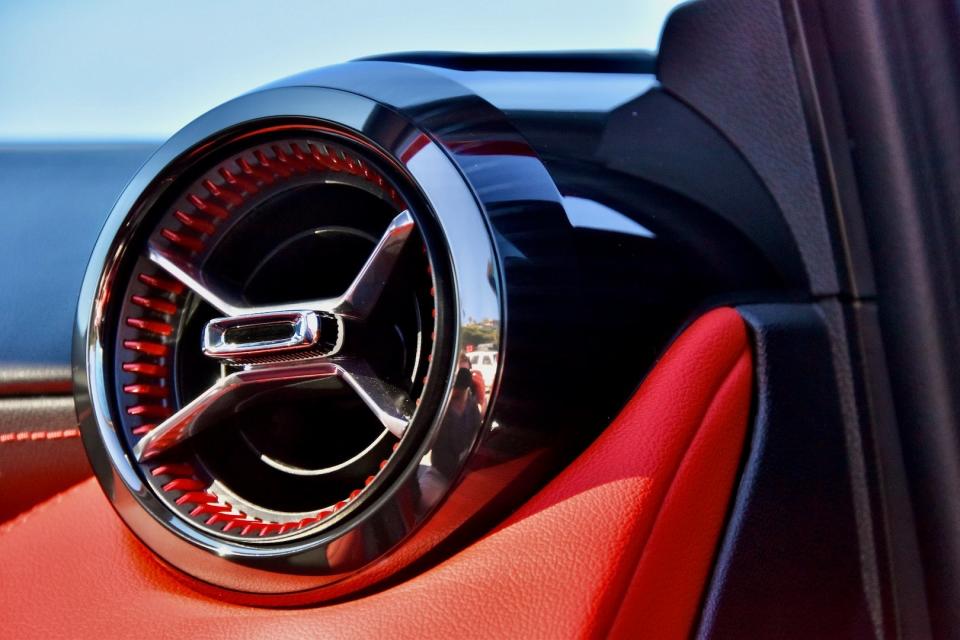
Stylistically, it’s an explosion of faux leather in the style of a gaming chair; the red and black colorway looks like it should come with a coupon for a 12-pack of Mountain Dew Code Red. The materials and build quality are unremarkable for the price point, but the seats offer solid back support and not a whole lot of bolstering.
One of the Blazer EV’s headline features is its Google Android Automotive infotainment. It’s integrated with the charging system to plan navigation routes based on charger locations and estimated range, with programming to pre-condition the battery as you near planned stops.
More car companies like Polestar and Volvo have been pairing up with Google to run their infotainment OS, though in the Blazer EV they come with the drawback of no support for Apple CarPlay or Android Auto smartphone connectivity, which GM has infamously dropped for reasons that surely have nothing to do with data collection. Of course, you can still easily pair your phone and run apps like Google Maps directly through the system, but feature organization and menu nesting aren’t the software’s strong suit. Some core functions (like the pause button when you're listening to music) aren’t where you expect them to be. It is fast and smooth, however. I experienced no stability issues, but others at the event spoke of system crashes, and Polestar's initial launch was of its own Google OS was beset by bugs. Don't expect software perfection out of the gate.

 Yahoo Autos
Yahoo Autos 